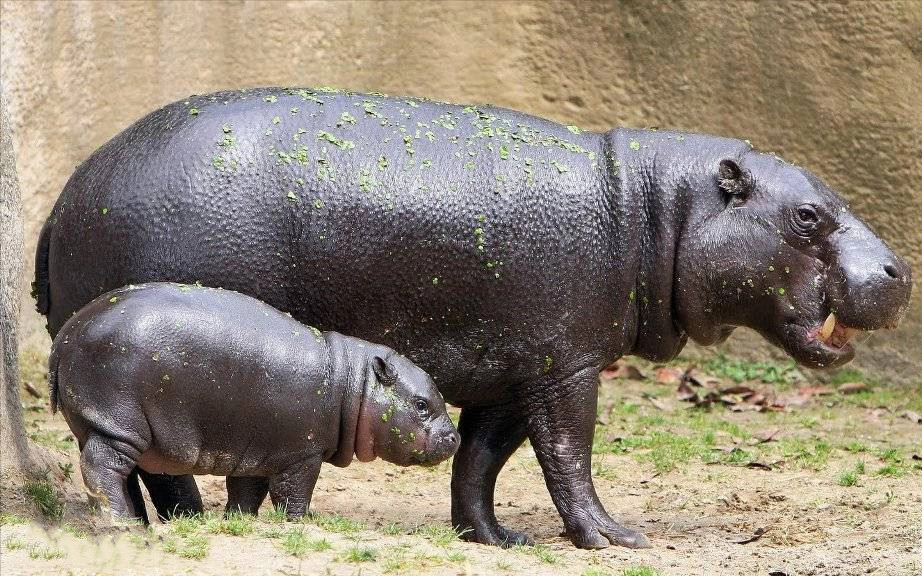The pygmy hippopotamus (scientific name: 鯬 hippopotamus) is a large mammal of the mammal family, hippopotamus. The body length is 1.5-1.75 meters, the shoulder height is 75-83 cm, the tail length is 15-20 cm, the weight is about 160-270 kg, and the weight is about 7-8 times smaller than that of hippopotamus. The body is large and clumsy, the limbs are particularly short, there is a thick head and a particularly large mouth, and the eyes, nostrils, ear shells, etc. are all born on the upper end of the face, almost on the same plane. The skin is thick, up to 4-5 cm thick on the back and sides, dark brown and reddish purple, smooth and hairless, with only some hairs on the end of the mouth, the inside of the ears and the tail. There are 4 toes of almost equal size on the front and back limbs, and the toes have hooves at the tips, which are shaped like flat claws, and there are slightly webbed between the toes.

Its natural habitats are streams, moist forests, and swamps. Prefers to move alone and only appears in pairs when mating. It mainly eats low ferns, broad-leaved plants and fruits that fall to the ground in the rainforest, and spends about 6 hours a day forage. It is only found in Côte d'Ivoire, Liberia, Sierra Leone and its neighboring areas in West Africa. In 2013, it was voted 19th on the world's cutest species list and included in the IUCN Red List of Threatened Species.
The good news is that Sapo National Park is working to protect the pygmy hippo species and ensure that its habitat is not destroyed. The rangers have been trained in law enforcement procedures, have been patrolling the park since 2005 and have launched community livelihood projects to support surrounding villagers. Illegal gold mining and subsequent hunting are still ongoing, but on a much smaller scale than at the height of the crisis, and park managers and local communities are working closely together to stop these activities.
The park has also recently received funding from FFEM (the French government) to support research and biomonitoring projects. One of these interventions is a community-based biomonitoring program. Originally started in 2001 but abandoned due to a crisis in 2003, the program is designed to track changes in animal indicator species for key ecological parameters in and around the park. The 4-month test of the biomonitor tracker was conducted by two selected members in the community. Next, start training the tracker in data collection and strip building. Such a program would help provide data on the relative abundance of pygmy hippos as well as other key species, and by comparing pre-civil war data from the park species, park administrators hope to change the relative abundance of pygmy hippos due to hunting pressures.
But an encouraging sign for hippos in Sapo National Park is that data collected by rangers during routine patrols of the park since May 2006 show that hippos remain in many parts of the park, as noted in the original biological monitoring plan in 2001. The recording of females and their cubs in an area close to the park's border, not far from villagers, may indicate that the biological conservation education program around the park highlights the importance and conservation status of hippos is at play.
In December 2012, the Liberia Forestry Development Authority and Flora and Fauna International convened a national action plan meeting, during which the Action Plan for the Protection of The Liberian Gemmi Hippopotamus was developed. The action plan adopts the same vision and objectives as the Regional Pygmy Hippo Protection Strategy and sets out the goals necessary to achieve them in Liberia and the necessary actions necessary to achieve them
As of December 31, 2013, the International Handbook of Pygmy Hippopotamus Research records 353 live hippopotamus raised by 133 institutions. But the age structure is not very healthy, young animals, sex ratio deviation, male 38.53%, female 58.64%, unknown 2.83%. The 30-day mortality rate for both males and females is high: 33% of the total.